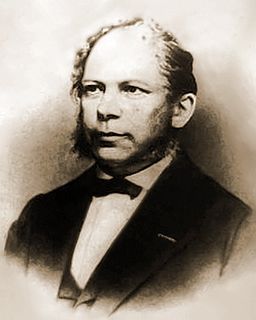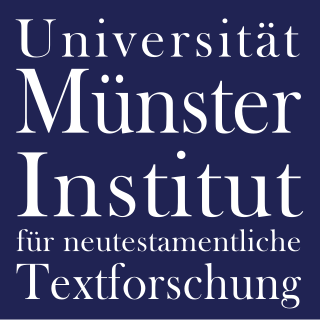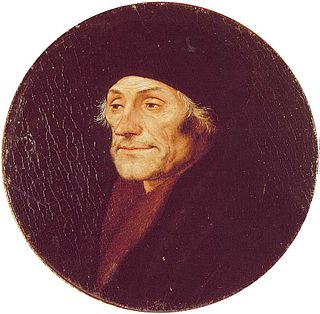
Lobegott Friedrich Constantin (von) Tischendorf was a German biblical scholar. In 1844, he discovered the world's oldest and most complete Bible, dated to around the mid-4th century and called Codex Sinaiticus, after the St. Catherine's Monastery at Mt. Sinai, where Tischendorf discovered it. Tischendorf was made an Honorary Doctor by Oxford University on 16 March 1865, and an Honorary Doctor by Cambridge University on 9 March 1865 following this find of the century. While a student gaining his academic degree in the 1840s, he earned international recognition when he deciphered the Codex Ephraemi Rescriptus, a 5th-century Greek manuscript of the New Testament.

Codex Sinaiticus or "Sinai Bible" is one of the four great uncial codices, ancient, handwritten copies of a Christian Bible in Greek. The codex is a historical treasure.

The Codex Vaticanus is one of the oldest copies of the Bible, one of the four great uncial codices. The Codex is named after its place of conservation in the Vatican Library, where it has been kept since at least the 15th century. It is written on 759 leaves of vellum in uncial letters and has been dated palaeographically to the 4th century.
John Mill was an English theologian noted for his critical edition of the Greek New Testament which included notes on over thirty-thousand variant readings in the manuscripts of the New Testament.

In Christianity, the term Textus Receptus refers to all printed editions of the Greek New Testament from Erasmus' Novum Instrumentum omne (1516) to the 1633 Elzevier edition. It was the most commonly used text type for Protestant denominations.
Johann Jakob Wettstein was a Swiss theologian, best known as a New Testament critic.

The Codex Alexandrinus is a fifth-century Christian manuscript of a Greek Bible, containing the majority of the Greek Old Testament and the Greek New Testament. It is one of the four Great uncial codices. Along with the Codex Sinaiticus and the Vaticanus, it is one of the earliest and most complete manuscripts of the Bible. Brian Walton assigned Alexandrinus the capital Latin letter A in the Polyglot Bible of 1657. This designation was maintained when the system was standardized by Wettstein in 1751. Thus, Alexandrinus held the first position in the manuscript list.

Codex Ephraemi Rescriptus is a fifth-century Greek manuscript of the Bible, sometimes referred to as one of the four great uncials. The manuscript is not intact: in its current condition, Codex C contains material from every New Testament book except 2 Thessalonians and 2 John; however, only six books of the Greek Old Testament are represented. It is not known whether 2 Thessalonians and 2 John were excluded on purpose, or whether no fragment of either epistle happened to survive.

Novum Testamentum Graece is a critical edition of the New Testament in its original Koine Greek, forming the basis of most modern Bible translations and biblical criticism. It is also known as the Nestle-Aland edition after its most influential editors, Eberhard Nestle and Kurt Aland. The text, edited by the Institute for New Testament Textual Research, is currently in its 28th edition, abbreviated NA28.

Kurt Aland was a German theologian and biblical scholar who specialized in New Testament textual criticism. He founded the Institut für neutestamentliche Textforschung in Münster and served as its first director from 1959 to 1983. He was one of the principal editors of Nestle-Aland – Novum Testamentum Graece for the Deutsche Bibelgesellschaft and The Greek New Testament for the United Bible Societies.

The episode of the daughter of Jairus is a combination of miracles of Jesus in the Gospels
Editio Critica Maior (ECM) is a critical edition of the Greek New Testament being produced by the Institut für neutestamentliche Textforschung —which is famous, for example, for the Novum Testamentum Graece —in collaboration with other international institutes.

The Institute for New Testament Textual Research at the University of Münster, Westphalia, Germany, is to research the textual history of the New Testament and to reconstruct its Greek initial text on the basis of the entire manuscript tradition, the early translations and patristic citations; furthermore the preparation of an Editio Critica Maior based on the entire tradition of the New Testament in Greek manuscripts, early versions and New Testament quotations in ancient Christian literature. Under Kurt Aland's supervision, the INTF collected almost the entire material that was needed – manuscript count 1950: 4250; 1983: 5460; 2017: approximately 5800.

Codex Campianus is designated as "M" or "021" in the Gregory-Aland cataloging system and as "ε 72" in the Von Soden system. It is a Greek uncial manuscript of the New Testament, dated palaeographically to the 9th century. The manuscript has complex contents. It has marginalia and was prepared for liturgical (religious) use.

Codex Basilensis A. N. IV. 2, Minuscule 1, δ 254 and formerly designated by 1eap to distinguish it from minuscule 1rK is a Greek minuscule manuscript of the New Testament, usually dated palaeographically to the 12th century AD. It is written on 297 parchment leaves and contains the entire New Testament except the Book of Revelation.

Editio Regia is the third and the most important edition of the Greek New Testament of Robert Estienne (1503-1559). It is one of the most important representatives of the Textus Receptus, the first generation of printed editions of the Greek New Testament in history. It was named Editio Regia because of the beautiful and elegant Greek font it uses.

Novum Instrumentum omne was the first published New Testament in Greek (1516). It was prepared by Desiderius Erasmus (1466–1536) and printed by Johann Froben (1460–1527) of Basel. Although the first printed Greek New Testament was the Complutensian Polyglot (1514), it was the second to be published (1516). Erasmus used several Greek manuscripts housed in Basel, but some verses in Revelation he translated from the Latin Vulgate.

Barbara Aland, née Ehlers is a German theologian and was a Professor of New Testament Research and Church History at Westphalian Wilhelms-University of Münster until 2002.
Editio Octava Critica Maior is a critical edition of the Greek New Testament produced by Constantin von Tischendorf. It was Tischendorf's eighth edition of the Greek Testament, and the most important, published between 1864 and 1894.














